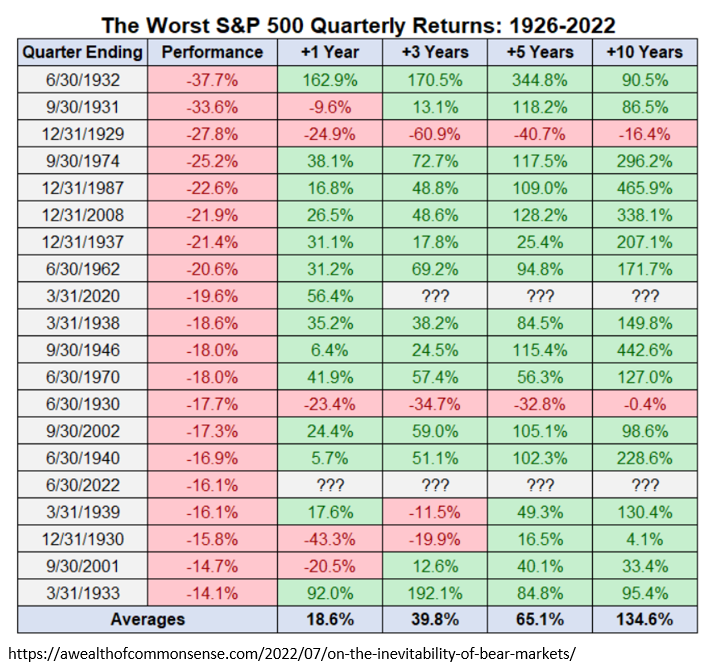The market’s recent rally (up 9% in July) has provided some relief from this year’s challenging conditions. It also has people asking a lot of questions such as:
- Is the bear market over?
- Is this just a relief rally?
- Is another shoe going to drop and send the markets back down again?
- Is it a good time to put more money to work?
While I understand the questions, they’re not really answerable. Trying to time market tops and bottoms is a fool’s errand. But it doesn’t matter anyway. What do I mean? Let’s look at the two most recent examples of painful market selloffs and assume you invested at the worst possible time.
Remember the Financial Crisis of 2008? Of course, you do. Let’s assume you made your only purchase of stocks (I’ll use the S&P 500 index as a proxy) on the worst possible day before the Crisis erupted – October 9, 2007. The S&P 500 sat at 1,565 on that day. Fast forward 14 years and the S&P 500 is around 4,100. Your annualized return is 8.94%. In sum: you invested at the worst possible time of the century, yet your average annual returns since then are on par with the market’s long-term average.
How about a similar example during the COVID winter? If you bought the S&P 500 index on February 19, 2020 – the day all the lights went out – the market was at 3,386. Even after this year’s selloff, your annualized return has been 10%. Worst timing of the pandemic. Pretty good equity returns.
I have two points to make:
- Whether you invested on the best day, the worst day, or anywhere in between, time in the market – not timing – is the key. Time has a way of leaching the risk out of owning the stock market. The longer you’re willing to invest for, the better results you’ll see. No matter which day you invest.
- You’re not investing in “the market” per se. You’re investing in the resilience of the greatest companies in the world and their ability to navigate economic ups and downs to create growing value for their shareholders over time. It won’t be any different this time.
For those who missed our last webinar, we shared the following chart to illustrate what typically happens to market returns after particularly lousy quarters. Feel free to pore over the numbers if you like, but our point is that historically, there’s been a lot more positive returns looking one year forward than negative ones.

We believe that most of today’s negative news is already baked into current stock and bond prices. Corporate earnings season for the second quarter is coming to a close, and profits are the highest they’ve ever been, despite inflation. Q3 corporate earnings will tell us a great deal about the prospects for 2023 and beyond, so stay tuned. We’ll keep you updated.
The S&P 500 index is an unmanaged market-cap-weighted index of the 500 largest companies in the U.S. It is owned by Standard and Poors. You cannot directly purchase the index.

